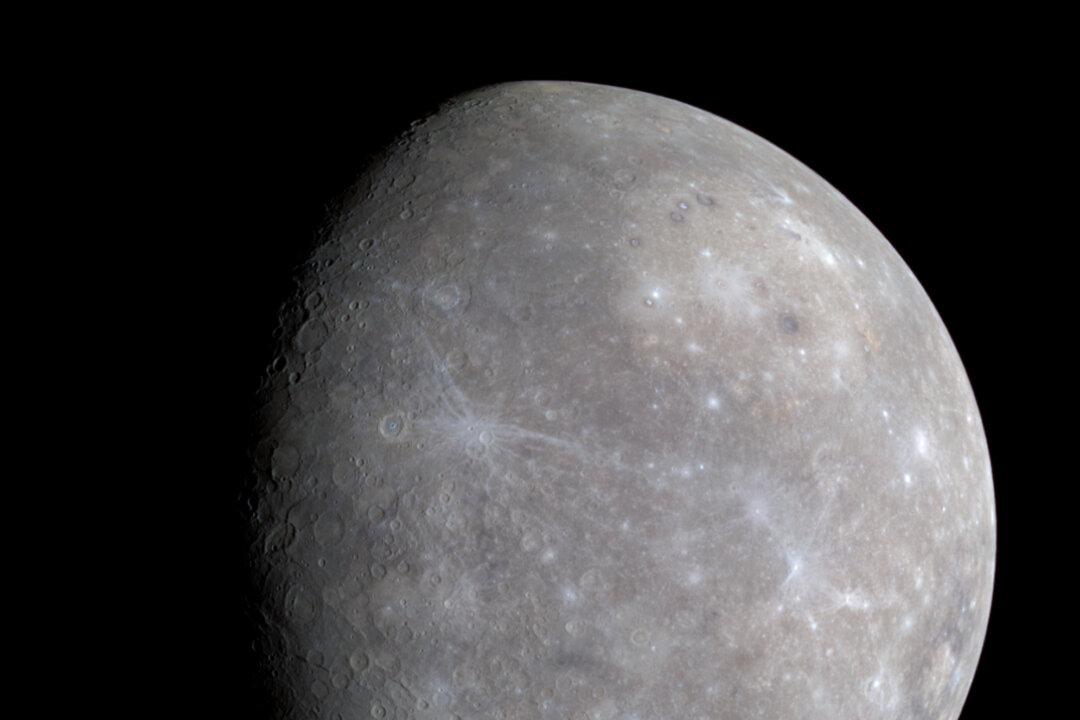Scientists have long puzzled over the planet Mercury’s dark, barely reflective surface. Now they believe they have the answer.
New research suggests that a steady dusting of carbon from passing comets has slowly painted the planet black over billions of years.
On average, Mercury is much darker than its closest airless neighbor, our moon. Airless bodies are known to be darkened by micrometeorite impacts and bombardment of solar wind, processes that create a thin coating of dark iron nanoparticles on the surface. But spectral data from Mercury suggests its surface contains very little nanophase iron, certainly not enough to account for its dim appearance.
16,000 Mph
“It’s long been hypothesized that there’s a mystery darkening agent that’s contributing to Mercury’s low reflectance,” says Megan Bruck Syal, a postdoctoral researcher at Lawrence Livermore National Laboratory who performed this research while a graduate student at Brown University.
“One thing that hadn’t been considered was that Mercury gets dumped on by a lot of material derived from comets.”




